All of our blog posts to this point have been written with our clients and pet owners in mind. We appreciate our clients and the importance that they place on premium health care for their pets. We maintain our blog, our Facebook page, our Flickr photostream and our Tweets specifically for our clients. Having informed, engaged pet owners is critical to optimum care.
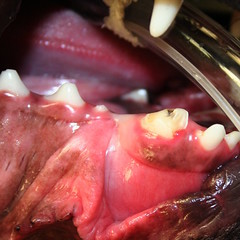 |
With this post, though, we are writing to and for our veterinary colleagues for the purpose of sharing an extraction technique that has been very helpful and successful within our dental practice. We do not claim to be Veterinary Dental Specialists, but we do have vast experience with dental care and oral surgery with dogs and cats, and we’ve been able to use our training and experience to benefit the health and lives of our patients.
For the longest time we dreaded lower canine extractions, or to use the proper dental terminology, extraction of 304 and/or 404. These have the potential to be troublesome at best and disastrous at worst due to the fragile nature of the mandible when the forces necessary for extraction are applied to it. But with the use of two incisions, a couple of different sizes of elevators applied at the correct places and a high-speed drill, extraction of a lower canine has been much, much easier to perform. Following this extraction technique, which takes much less time to perform compared with other techniques, the space is filled with Consil putty and the edges of the gingiva are sutured together.
Our patients have been comfortable following the procedure and our owners have reported that their dogs and cats have eaten normally and behaved more than comfortably following their extraction.
I’ll now share the step-by-step process that I follow. The photos are not all from the same patient, but are the best collection of representative images that I have to offer.
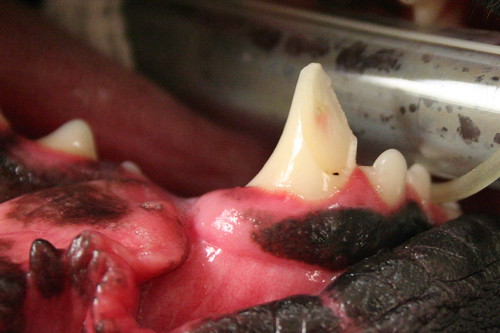 |
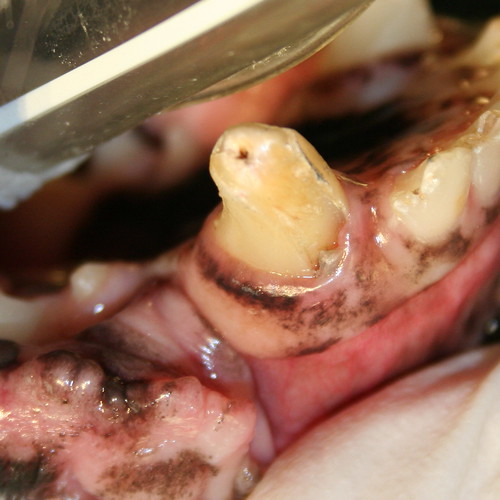 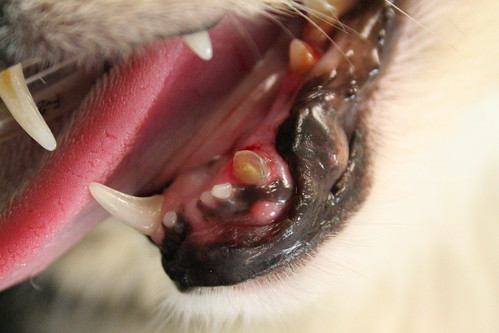 |
First, I obtain a radiograph to get an idea of what the bone structure is like underneath the root. This helps me to orient my incisions properly and it helps me to know just how much good bone is present under the root. Sometimes when a fractured tooth has been allowed to remain for too long, the bone beneath the root begins to resorb. (Should you find significant bone resorption, use common sense, speak frankly with the owner about the situation at hand, and consider referral to a Dental Specialist before proceeding.) These two patients’ radiographs reveal good situations beneath the gum line.
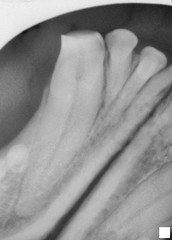 |
 |
I make an incision with a 15 blade through the gingiva both over the dorsal surface of the canine’s root and on the rostral/buccal surface of the canine tooth. Using an elevator, I lift the gingiva off of the underlying bone dorsally and rostrolaterally. The rostral incision allows for greater exposure of the dorsal surface of the canine root.
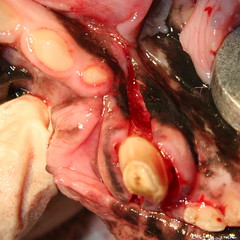 |
Visualizing this bone is critical to successful use of the high-speed drill. The bone dorsal to the root (under the tongue) is removed using a burr attachment with the high-speed drill. The periodontal ligament is broken down along the other three sides of the root with elevators. Only slow and steady pressure is used, and the lower portion of the mandible should never be torqued. Once the tooth is removed, there is considerable space left behind. The benefit of this technique is that it absolutely and definitively preserves the integrity of the mandible under the root.
 |
Consil putty provides a matrix for new bone to form so that the jaw can return to a normal density and stability.
 |
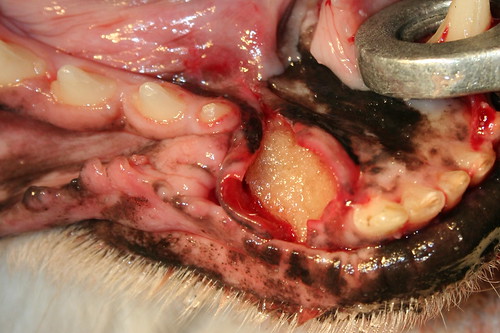 |
The final step is to suture the leading edges of gingiva over the extraction site and Consil putty.
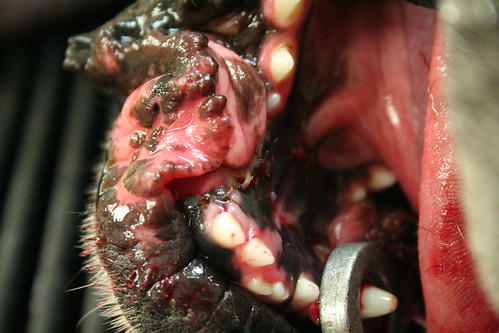 |
 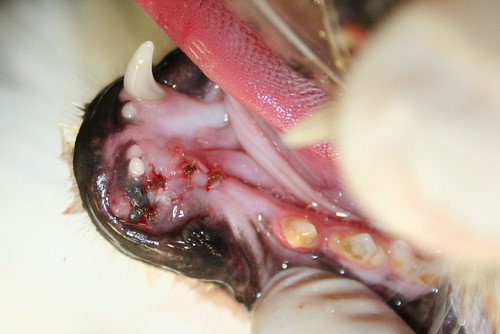 |
To my veterinary friends, just like all dental care procedures, this technique takes time and patience to master. Experience has shown us that this is a very reliable, useful technique that has minimized anesthetic time, reduced unnecessary and even harmful stresses on the mandible, and has improved the quality of dental care that we can provide for our patients.
We welcome your feedback and any thoughts you may have.
Update, 11/21/11:
Saw a dog that needed both lower canines addressed. Following this technique, things went very smoothly.
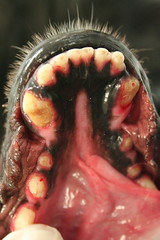 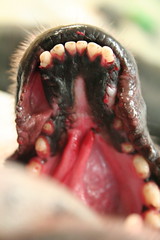 |


The Cuyahoga Falls Veterinary Clinic | Animal Wellness | Medical Services | Pet Services
[…] writing this primarily for the benefit of other veterinarians (much like my 304/404 extraction post) because when I got started in the process and researched treatment options for discospondylitis, […]